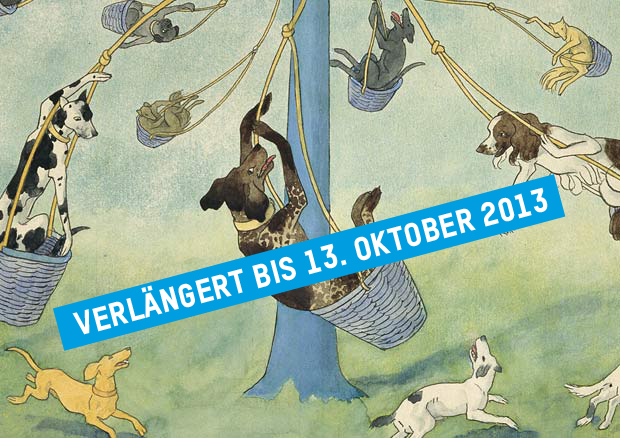The legendary book illustrator revisited
The Butterflies' Ball and the Dogs' Party. Ernst Kreidolf and the Animals
Besides flora and foliage, animals with anthropomorphic traits inhabit Ernst Kreidolf’s illustrations. The Kunstmuseum Bern has a rich collection of his drawings of grasshoppers, butterflies, cats, or dogs in its storerooms, and many of them will be shown to the public for the first time in the exhibition «Butterflies’ Ball and Dogs’ Party».
The exhibition Butterflies’ Ball and Dogs’ Party is especially for an audience that would like to once again see the universally famous and widely popular creations of this artist, following on from the exhibitions Ernst Kreidolf and Art History, Art and Children’s Books around 1900 (2002) and Ernst Kreidolf and His Artist Friends (2007), which comprehensively explored his artistic roots.
Kreidolf’s talent for not only representing plants in a very realistic manner, but also, when need be, to anthropomorphize the flora we know has been and still is greatly admired by all ages. It has often been addressed in research and been subject to interpretation. However, Kreidolf was not only an expert in botany but a great lover of animals too. Everything that could crawl, fly, or run about on legs attracted his loving and attentive eye, ranging from small beetles to elephants. Among insects he particularly admired grasshoppers and butterflies, while cats and dogs also play an important role in his work. Just like plants, he likewise often imbued his animals with human characteristics. But in doing so the artist was primarily concerned with depicting the qualities typical for individual species rather than making them “play roles” alien to them. His sensitivity for the peculiarities of animals is expressed especially poignantly in the picture books Sommervögel (Summer birds, 1908), Servants of the Spring (first published 1926), and The Dogs’ Party (1928).
The exhibition presents Kreidolf’s popular creations together with seldom or never publicly exhibited works that thematically engage with fauna. The exhibition comprises six “chapters”: The first “chapter” or section is a kind of prelude showing his early work, in which we can admire his scientific curiosity and realistic exactness of representation. In the various following rooms we find each devoted to a different set of the creatures which lived in his books: dogs in one space, butterflies in another, grasshoppers and various insects, fantasy and mythical creatures, as well as other animals in further rooms.
The presentation comprises largely holdings of the Ernst Kreidolf Society that have been deposited at the Kunstmuseum Bern.


